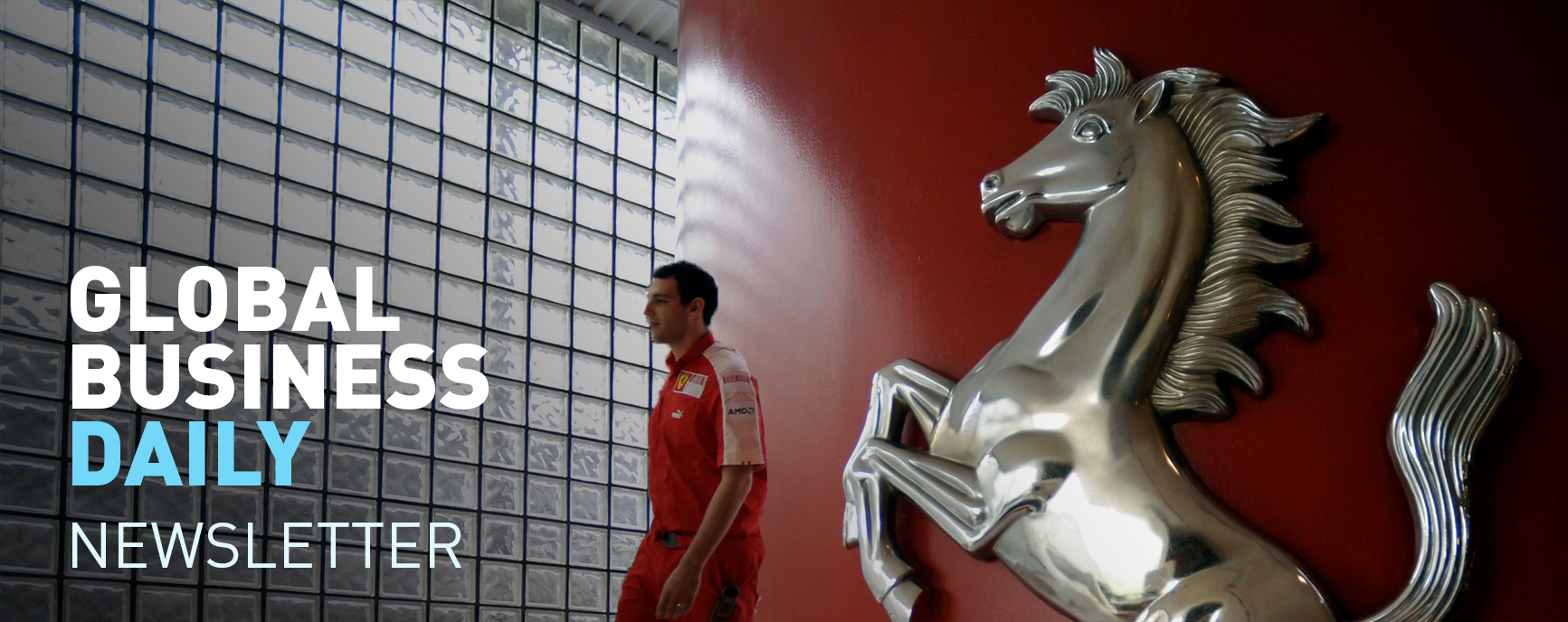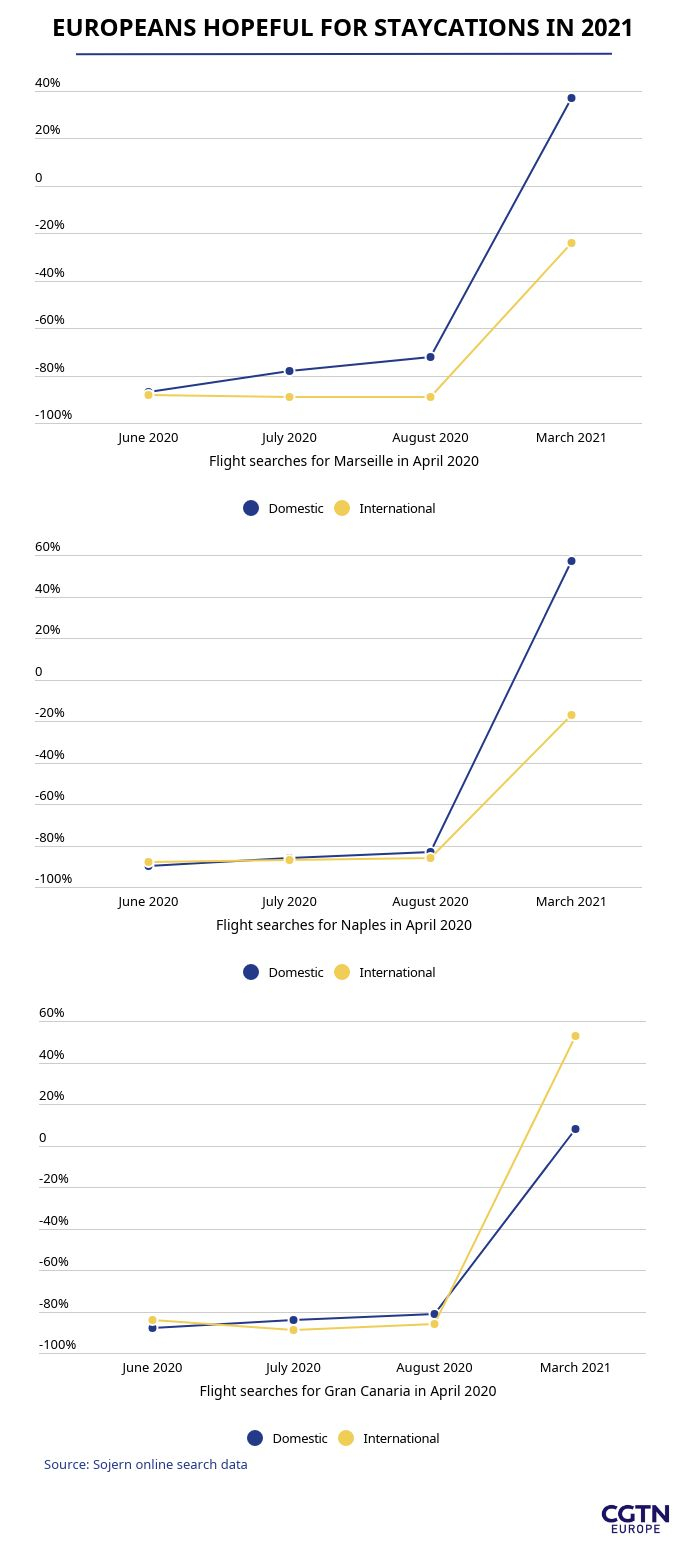"I'm glad a very large majority of member states are supporting my request to authorize airlines and maritime groups to temporarily use vouchers when trips are cancelled."
Jean-Baptiste Djebbari, the French transport minister, reacted to 14 nations joining his call for the European Union to suspend the bloc's generous consumer support rules, which guarantee passengers on cancelled trips get cash refunds. While 14 out of 27 isn't actually a "large majority," but economies such as Germany joining the group does place weight behind the campaign.
It was good news for airlines, adding to a happy day for those hoping to return to the air soon. Norwegian Airlines is likely to qualify for government aid after agreeing to a debt-equity swap in a shareholder meeting this morning.
And further along a similar journey, Air France-KLM was granted state funds after the European Commission ruled it was urgently required.
As airlines take solace, passengers are starting to look towards future getaways. In today's graph we look at the flights searched for online this April, with a surprising trend for "staycations" perhaps showing what 2021 holds.
Happy reading,
Patrick Atack
Digital business correspondent
P.S. Did you know we send this briefing by email, too?
You can sign up to receive it here.

Norwegian Air shareholders have voted in favor of converting $960 million from debt to equity, as negotiated with the aircraft leasing companies on which Norwegian relies. It is hoped this will save the airline from collapse, as it will mean the company can apply for government bailout funds.
Huawei was the sole Chinese mobile phone manufacturer to show an increase in shipments in the first quarter of 2020. Huawei shipped 30.1 million smartphones in China, compared with 29.9 million units a year earlier. Rival firms Oppo, Vivo, and Xiaomi have market share in the teens, compared with Huawei's 41 percent.
Luxury Italian car brand Ferrari has cut its estimated pre-tax earnings for 2020 from $1.5 billion to $1.09 billion after a stunted first three months of the year. As Italy loosens its COVID-19 lockdown, Ferrari has today restarted output at its Maranello and Modena factories.
The French government has rejected Amazon's application for partial unemployment funds after the e-commerce firm shut six warehouses instead of limiting deliveries to "essential goods" as ordered by a court over concerns the firm was not doing enough to protect workers from COVID-19.
Uber said it will close its Eats food delivery services in Czechia, Egypt, Honduras, Romania, Saudi Arabia, Ukraine, and Uruguay as the markets represented only one percent of its global bookings. The firm said its taxi services would not be affected.
U.S. car maker Ford said it will reopen plants in Germany, Valencia in Spain, and Craiova in Romania today, after they were closed in mid-March. Other factories will open later in the month and its UK locations will stay closed until the UK government changes its advice.
French car producing group PSA has also reopened some factories, as part of a gradual reopening this week. However, plants in France will only reopen from 11 May.
The European Union's competition chief Margrethe Vestager has approved French state aid directed to Air France-KLM worth $7.6 billion. The loan guarantee and shareholder loan "will provide Air France with the liquidity that it urgently needs to withstand the impact of the coronavirus outbreak," Vestager said.
Iceland's prime minister, Katrin Jakobsdottir, said the Reykjavik government may consider taking a stake in the airline Icelandair Group, if it needs an injection of capital to recover from the coronavirus lockdown.
Telefónica has confirmed it is in talks with Liberty Global over ambitions to merge UK mobile phone firm O2 with Virgin Media, a TV and broadband provider. Telefónica has previously had attempts to sell O2 blocked by regulators, but it is reported the firms are close to a deal on a joint-venture.
Amazon Web Services' vice-president and senior engineer Tim Bray has quit his high-profile role over the treatment and dismissal of staff whistleblowing on COVID-19 safety concerns in Amazon warehouses.
New Zealand prime minister Jacinda Ardern will join Australia's cabinet meeting to discuss a "Trans-Tasman travel bubble" and a cooperative COVID-19 tracking app, as both nations showed confidence in their pandemic strategies.
Lemoine, a French cotton bud manufacturer, has answered the call from the government by switching its production to nasal swabs.
01:49

Jerome Kim, director general of the International Vaccines Institute, talked to CGTN Europe about the science, development, production, and distribution behind vaccines.
Firstly, please explain a little how vaccines work.
I think the first thing to remember is that vaccines are based on a concept that we learned from the natural history of infectious diseases. And that is that, by and large, for most of the diseases that we've developed the vaccines for, if you get the natural infection, if you get measles or if you get mumps or German measles, typically for the rest of your life, once you recover, you'll be protected against that disease. So you're immune from reinfection.
And, really, a vaccine does exactly that by taking a small part of a virus or taking the virus... The body generates these responses that are normally designed to rid the body of the infection, but instead what those responses do is protect the individual against infection by the real virus.
It's not just about developing a vaccine, though, is it? It's all about distributing it too.
Right. So, you know, vaccines are developed in phases and there are typically three phases that take five to 10 years. And the first phase is usually conducted in about 50 people or less. And it really looks to see whether the vaccine has any safety signals or is associated with any bad side effects. We also look to see if the vaccine is making the right protective responses.
But the real goal of the first phase is to make sure the vaccine is safe. The second phase, we actually begin to look at the vaccine and what we call the target population. That is what group of people are we going to use the vaccine in eventually when we finally have a vaccine that's licensed and ready for use in humans. Phase 3, we actually look to see if the vaccine is safe and effective. Does the vaccine protect against infection or disease? And then after all of that is done, you take that entire package of data and sometimes it's 100,000 pieces of paper.
And you take it to the MHRA in the UK or the FDA in the United States and give them all of that and say 'we believe this vaccine protects against X.' And the regulatory agency will look through all those documents and say, 'yes, we agree with you' or 'no, we don't agree with you.' And if it's approved, then it goes to another group, because, you know, just because you have a vaccine that's ready for marketing doesn't mean that doctors around the world are going to prescribe it.
So you actually have to have another group that tells you, 'yes, we agree this vaccine is ready. You should use it.'
This is an incredibly long process. You've described human trials have started in the UK, but is that significant? Does that mean we could have a vaccine sooner rather than later?
Yes. I think most people remember in December we knew absolutely nothing about this virus. And now in April, we actually have a number of clinical trials going on in humans. So, three months after really the virus was described in the sequence, we actually were testing a vaccine in humans. And that is a remarkably short timeline. I mean, most people, when they described that, used the word 'unprecedented'.
How quickly after the testing could it be applied to the general public?
Another very important question. So, typically, when you're in the five- to 10-year timeline, during the third phase, the final phase of testing, the company is usually building the manufacturing capacity because, remember that in the end, a vaccine company is supposed to make money for its shareholders. So they don't want to have an approved vaccine sitting around waiting for the factory to be built. So, typically they're building that capacity while the trial is still going on, hoping that the vaccine will succeed. This is a little different.
So, remember that we've compressed the timeline from five to 10 years to maybe 12 to 18 months. If everything works well. So that means the people who are funding the vaccine developers in this case will also have to help probably with the development of the manufacturing capacity to get these vaccines into humans quickly. And so that will happen probably during the final stage of testing. They'll be looking at companies that could potentially make this vaccine for human use.
And governments, of course, will be adding a lot of revenue. They will be paying for a lot of these tests because every government in the world wants to see a vaccine on the street.
Yes, every government does, but not all governments have the means to do so. So, maybe if you're the United States or China, you can put enough money into the company in order to get it to accelerate vaccine clinical development and then, you know, get the company to promise that when they have a vaccine, that you have the rights to the first, you know, so many millions of doses. Other countries have joined an organization called CEPI, the Coalition for Epidemic Preparedness Innovations. The Wellcome Trust and the Bill and Melinda Gates Foundation have also contributed to CEPI.
And the idea behind it is, let's put together funding and collectively develop a vaccine so that where these outbreak diseases, which are very unpredictable, we can accelerate vaccine clinical development so we no longer have to wait five to 10 years. Maybe we can do it faster. And when we all succeed, then potentially we can benefit.
But how do you make sure that all the scientists are working together? I know the WHO is coordinating the efforts, but, as you say, there is a scramble. There's a race in China, the UK, the U.S. to take three examples to find this vaccine. How do you coordinate so much science, which is so widely distributed?
I think that having a core like CEPI will mean that there is a group of countries and scientists who are looking at all the products that are funded. Potentially you can compare the defensive responses that are developed. Do they want to test all nine of the vaccines that they currently are paying? Or do they want to pick the top two or the top three and take only those forward? And when do they do that? Are they going to look at the vaccine and [choose] the most promising or the vaccines that are associated with big companies that can rapidly manufacture and scale up production? The choices that need to be made are ones that have to be discussed.
If you were GSK or Johnson and Johnson, you might be able to do it all on your own. And typically that's what the big companies do. But a lot of the groups that were chosen initially by CEPI, and are faster, are small biotech companies. The other part of this is that we all have to recognize that COVID-19 is a global pandemic. And until we can vaccinate enough people around the world and give more people the benefit of vaccination, then really the world will not be safe. We have to work together in order to show that these vaccines work and then distribute the vaccine equitably with access to everyone.
